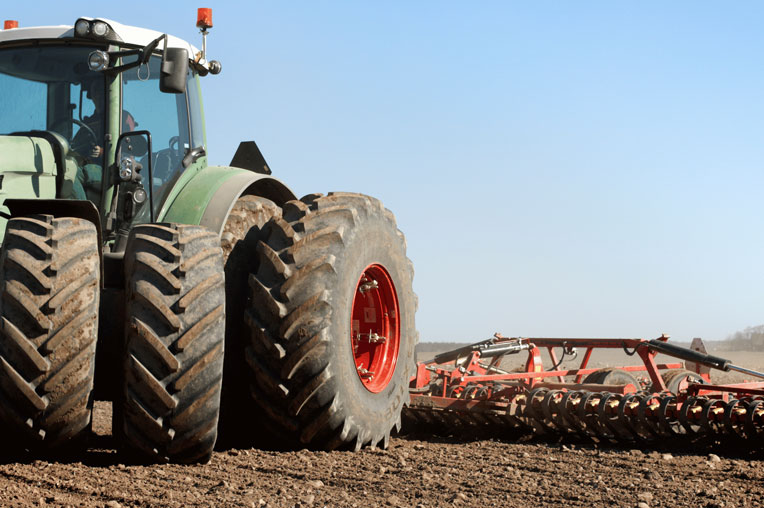This blog will help you learn what a tillage system is, its types, objectives, and benefits. Tillage is an important farm activity to prepare the soil for growing crops.
Farmers grow crops in every season and use wasteland for cultivation. Imagine! Will they farm directly on the same land repeatedly after every harvest without preparing the soil?
Obviously, after every season, there will be crop residues, soil clods, insects, pests, and soil compaction. So, to raise crops for the next harvest, they must prepare their land for crop-raising. To do it, they need to use an effective tillage system.
Let’s find out what it is, and its role in seedbed preparation & crop yield.
What is a Tillage System?
A tillage system changes the soil’s chemical, physical, and biological properties for better production. It involves tilling, planting, fertilisation, pesticide application, harvesting, and residue management. This system aims to create conditions for crops to grow and nourish.
It is a fact that cultivation practices affect soil water holding capacity and aeration, along with the temperature and decomposition rate of crop residues. That’s why one needs to examine the local soil conditions, climate, and crop type before choosing an appropriate tillage system.
But while learning tillage, you must wonder what “tilth” is. Sometimes people might get confused about this simple term. So here is the answer.
Tilth is the physical condition of the soil because of tillage. It can be fine, coarse, or moderate. It results from tillage done with a tractor with an implement called a harrow or a disc plough.
Tillage has different types, objectives and benefits. It improves the soil quality, making it best for seed germination, establishment, and growth of crops.
Types of Tillage
Here are some common tillage types:
Primary Tillage
The initial soil tillage after the last harvest. It is practised to reduce soil strength, incorporate crop residues, kill weeds and for soil aeration.
Secondary Tillage
Lighter tillage practices performed after primary tillage are called secondary tillage. It involves incorporating fertilisers, reducing the soil to a finer tilth, puddling and levelling soil surface, or controlling weeds.
Reduced Tillage
It is a less intense tillage activity with a shallower depth and less area disturbance, either in the bed, field or across the farm. It helps reduce soil erosion, increase soil productivity, and reduce production costs.
Intensive Tillage
Intensive tillage, also known as conventional tillage, typically includes different surface tillage operations to bury surface residue.
Conservation Tillage
Conservation tillage, or minimum tillage, is a broadly defined practice of reducing tillage intensity and retaining plant residues. It prepares the soil for growing crops by conserving soil, water and energy resources.
Zone Tillage
Zone tillage is a specific form of deep tillage in which only narrow strips are tilled, leaving the soil between the rows untilled.
Objectives of Tillage
The most basic objectives of tillage include:
- Seedbed preparation
- Water conservation
- Soil improvement
- Seedbed preparation
Here are a few additional objectives:
- Protection of yields against pests and pathogens.
- Provision of conditions for a better yield.
- Adequate soil aeration for gaseous exchange in the seed and root zone.
- Improvement of soil structure and permeability.
- Allowance of seed-soil contact to permit water flows to seed and seedling roots.
- Uniform distribution of manure and fertilisers.
- Permitting root elongation and proliferation with low-density soil.
- Eradicating the hard pan and increasing the soil depth for water absorption.
- Creation of an environment where the seedling gets maximum sunlight necessary for growth (through weed control).
Benefits of Tillage System
We’ve categorised the benefits of tillage into three types:
Physical Benefits
- Tillage stirs, mixes and softens the dense soil to a certain depth and breaks the clods and crust to a desirable extent for a better seedbed.
- Allows high water infiltration into subsoil due to increased pore space. It retains and releases moisture to crop plants or increases percolation or drying of excess soil water.
- To redistribute the soil constituents, particularly soil particles, organic matter, micro-organisms, moisture, and air.
- Incorporates crop residues, green manure, and other organic manure fertilisers.
- To maintain the proper structural condition of the soil.
- Prepares the land surface for easy, early, uniform irrigation and drainage water distribution.
- To increase soil aeration.
- Cover and pack the seeds or planting propagates with soil.
- Reduces soil erosion, degradation, and depletion.
Chemical Benefits
- Accelerates the soil weathering
- Adds nutrients to crops by enhancing the decomposition of organic matter, mineralisation, etc.
- Removes toxic gases from the prolonged reduced soil conditions and detoxifies soil from agrochemical harm.
- To reclaim problem soils.
Biological Benefits
- Prevention of soil-borne pests, pathogens, and larger soil animals
- Proper distribution of nutrients.
- Reducing penetration resistance of the soil and promoting root respiration affects the moist zone of the land.
- To provide an optimum habitat that encourages early and uniform growing and seedlings establishment.
- To provide better anchorage to crop plants and the underground development of storage roots and stems.
- Encourages soil-inhabiting growth and activity, beneficial flora and fauna, including symbiotic bacteria.
- To provide suitable conditions for necessary field operations, like, for planting and harvesting quickly, smoothly, and uniformly.
Bottom Line
Now that you know what tillage is, its types, objectives, and benefits, let’s get ready to till your land/ soil for a better yield. Choosing the proper implements for tilling and preparing your soil for farming can be a hassle.
That’s where Kelly Tillage comes in with the best, most durable harrows and discs to improve your seedbed by controlling weeds, managing residue, and controlling soil erosion. We believe in manufacturing products that contribute to sustainable agriculture across the globe. Find out the nearest distributors in your area.


